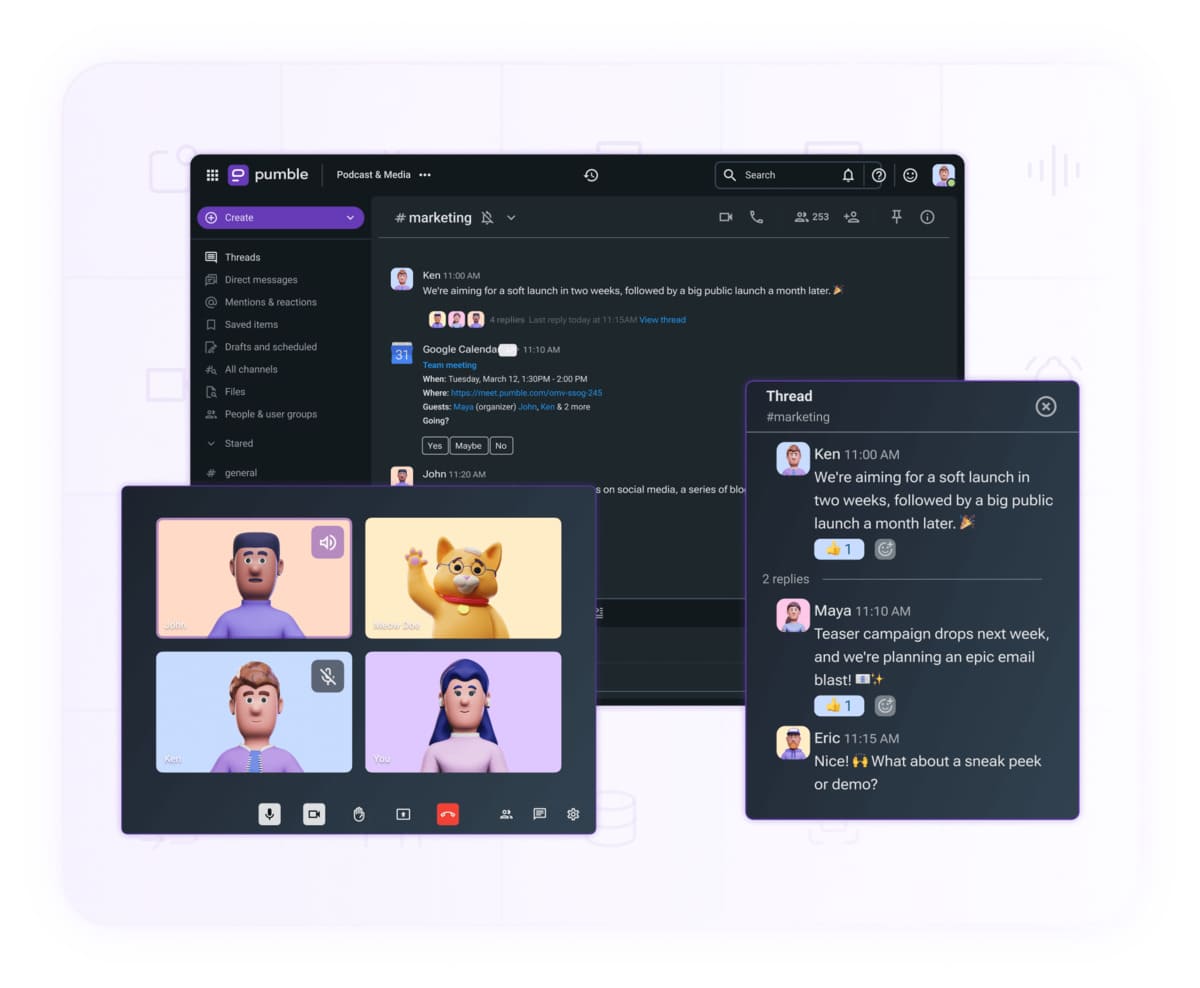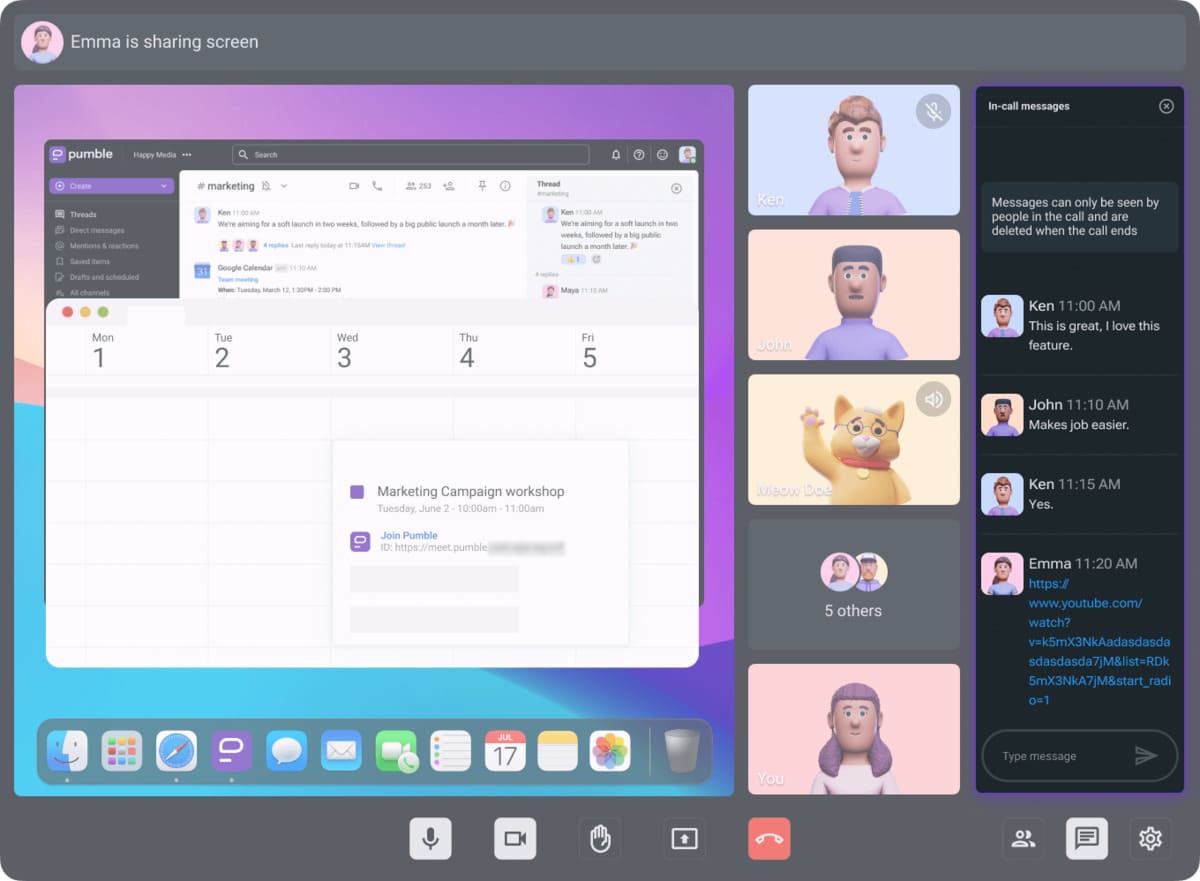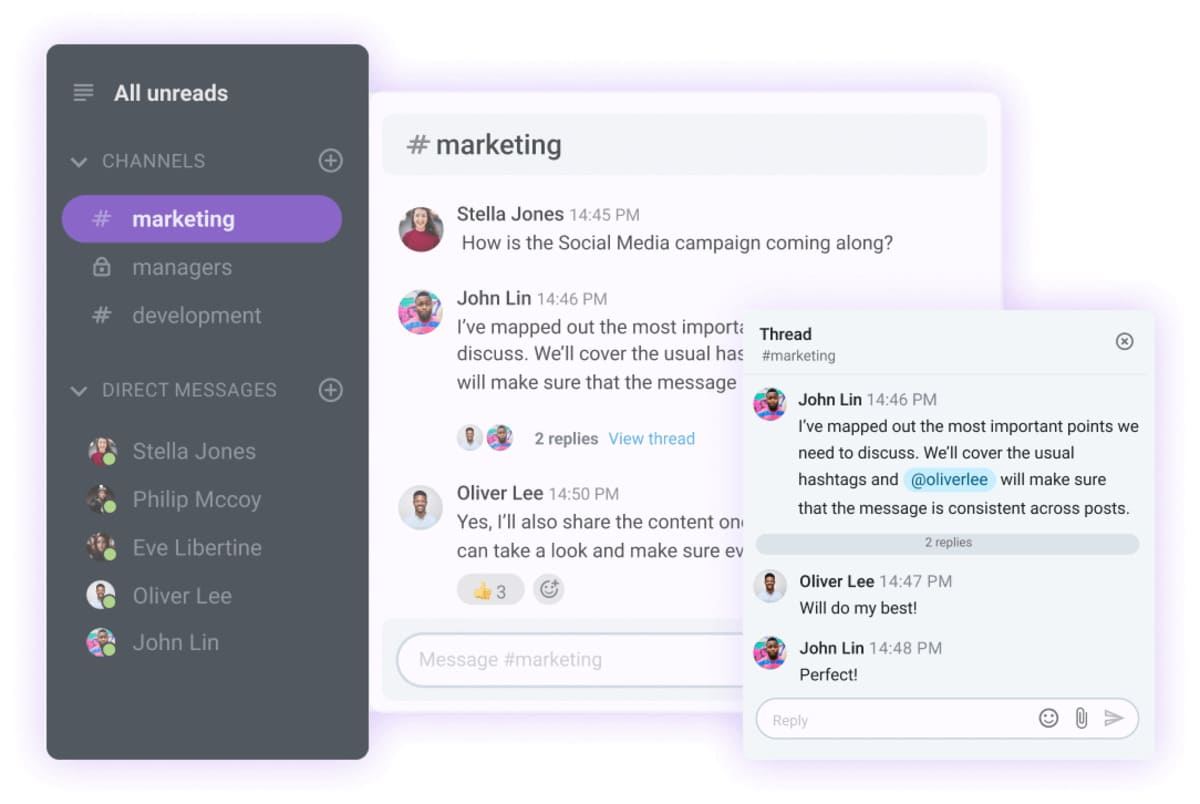If you’ve ever been in a problem-solving role, you know how nerve-wracking it can be to generate ideas quickly — especially when you’re put on the spot.
And, when the whole team is expected to contribute, the pressure keeps mounting. Even if your coworker has an excellent idea, they might be afraid of stumbling over their words or facing harsh criticism.
In situations like these, it helps to have a stress-free approach that promotes idea generation. That’s where brainwriting comes in.
We’ll delve deep into this strategy and see how it can benefit teams striving for innovative thinking.
Let’s jump in.

Table of Contents
What is brainwriting?
Brainwriting is a creative technique that prompts people to write their ideas before sharing them with a group. It can be conducted synchronously and asynchronously, and the group later shares, discusses, and refines the ideas.
The most popular variation of brainwriting is the 6-3-5 method, which focuses on producing multiple ideas without wasting time.
Initially designed for 6 participants, the process unfolds like this:
Each participant writes down 3 solutions to a problem. After 5 minutes, they give their sheet to the next person, and the cycle continues for 6 rounds. So, we have 6 people writing 3 suggestions in 5 minutes — hence the name 6-3-5 method.
However, the process isn’t any less effective if your team has more or fewer than 6 members. Whether your team is small or large, brainwriting is a practical problem-solving technique.
Brainwriting vs brainstorming: What’s the difference?
The difference between brainwriting and brainstorming is that while traditional brainstorming is an oral activity, brainwriting allows you to write down your suggestions first.
This slight twist:
- Increases participation among introverted or reluctant team members,
- Minimizes cognitive biases (i.e., conformity bias), and
- Yields a higher number of diverse ideas.
When everyone has jotted down their ideas, the team selects the best options and moves forward with developing them further. This process is beneficial for preventing the loudest voices from monopolizing the meeting and giving everyone a fair chance to contribute.
💡 Pumble Pro Tip
Although different from brainwriting, brainstorming is still a viable collaboration tactic. To make the most of it, check out these posts:
How to run a brainwriting session
If you feel like your team is ready to give brainwriting a shot, here are the steps you should follow.
#1 Decide on the type of meeting
First, you need to decide whether your team should meet in person or online.
For face-to-face brainwriting, make sure that everyone has a sheet of paper and a pen to complete the activity. This kind of meeting is a good choice when all team members are in the same time zone and want to kickstart creative idea generation.
But, what about teams whose members are working across time zones?
Here’s where asynchronous communication comes in clutch. With a business communication app, you can leverage handy features like channels and video conferencing to share ideas online.

For example, you could explain the principles of brainwriting in your team channel and give the members a day or two to record their suggestions. Then, you can schedule an idea-sharing video meeting for discussion and refinement. Not only does this option allow for more flexibility, but it’s also suitable for team members who prefer working more independently.
Host productive brainwriting sessions in Pumble
#2 Identify the problem and provide clarification
Once you identify a problem, you can turn it into a growth and improvement opportunity.
So, at the start of your meeting, take a few moments to discuss your project, task, or customer insight with the team. It’ll be easier to think of practical problem statements after everyone’s familiar with significant findings.
How your problem statement looks like largely depends on your industry, but some examples could include:
- How can we redesign our products to meet the changing needs of our customers?
- What marketing campaign should be run to raise brand awareness among Gen Z consumers?
- What can we change in our internal processes to improve cross-functional communication?
If you’re using a video meeting to run a brainwriting session, remember to share your screen so that attendees can all have a clear view of the problem statement.

#3 Write down ideas
As a team lead or manager, you must act as a moderator and ensure the group stays focused throughout all rounds of brainwriting.
Set a 5-minute timer, giving the attendees ample time to write down 3 ideas.
Once the time is up, repeat the activity for however many more rounds are necessary.
You could use a shared document for virtual meetings to keep all ideas in one place. Alternatively, participants can send in their suggestions as in-chat messages. You can compile the responses into a shared doc once the activity ends.
#4 Share and discuss the responses
Now, it’s time to create a shortlist of the best ideas.
Schedule a follow-up meeting to discuss the results or share the doc in your team channel.
Your team may prefer some time to evaluate all the suggestions and post their thoughts underneath your message. In team communication apps like Pumble responses are organized underneath the original message, and everyone will find all the info they need in the thread.

Once you have a list of the most popular ideas, you can focus on figuring out your next steps as a team.
Keep your discussions focused and never loose track of key ideas with Pumble
Benefits of brainwriting
Implementing brainwriting into your team’s workflow has several tangible advantages, including:
- Reducing groupthink: Because idea generation and idea review are separated in brainwriting, people feel safe sharing their thoughts. Similarly, they’ll support ideas they agree with and not those from the loudest coworkers.
- Improving async collaboration: Although effective, brainstorming can sometimes hold back remote and hybrid teams. However, you can easily adapt brainwriting to fit the needs of your team, regardless of location or time zone.
- Combining individual and group work: Not everyone performs well under the pressure of constantly working with other people. Thanks to brainwriting, individual work becomes the foundation for future teamwork. Moreover, data on problem-solving from Stanford University indicates that we’re more productive when allowed to work independently. With brainwriting, you can take this efficiency to the next level.
Achieve more with Pumble
Improving collaboration through brainwriting is simply one step toward business longevity. You also need to streamline communication, optimize workflows, and effectively monitor projects.
You can achieve all this and more with a team communication app such as Pumble. From seamless idea sharing to hassle-free meetings, it has what every team needs to discover focus and organization.
Cut down on unnecessary apps and use an all-in-one tool to create an effective digital workspace.







